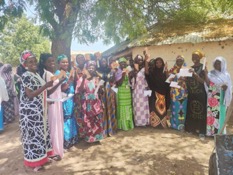News And PoliticsCommunications And EntertainmentSports And FitnessHealth And LifestyleOthersGeneralWorldnewsBusiness And MoneyNigerianewsRelationship And MarriageStories And PoemsArts And EducationScience And TechnologyCelebrityEntertainmentMotivationalsReligion And PrinciplesNewsFood And KitchenHealthPersonal Care And BeautySportsBusinessFamily And HolidaysStoriesIT And Computer ScienceRelationshipsLawLifestyleComedyReligionLifetipsEducationMotivationAgriculturePoliticsAnnouncementUSMLE And MedicalsMoneyEngineeringPoemsSocial SciencesHistoryFoodGive AidBeautyMarriageQuestions And AnswersHobbies And HandiworksVehicles And MobilityTechnologyFamilyPrinciplesNatureQuotesFashionAdvertisementChildrenKitchenGive HelpArtsWomenSpiritualityQuestions AnsweredAnimalsHerbal MedicineSciencePersonal CareFitnessTravelSecurityOpinionMedicineHome RemedyMenReviewsHobbiesGiveawayHolidaysUsmleVehiclesHandiworksHalloweenQ&A
Top Recent
Loading...
You are not following any account(s)
dataDp/1032.jpeg
Worldnews

US Government Must Keep Funding Legal Aid For Migrant Children, Judge Rules
~1.5 mins read
The ruling temporarily stops 26,000 unaccompanied minors from losing their legal representation. A federal judge has ordered the United States government to temporarily restart funding for legal aid to migrant children travelling alone, saying it makes the immigration system fairer. The order by US District Judge Araceli Martinez-Olguin of San Francisco on Tuesday prevents tens of thousands of unaccompanied children from losing their lawyers. It comes after President Donald Trump’s administration cancelled a contract with a nonprofit that helps them get legal representation. Trump’s administration ended the government’s contract with the Acacia Center for Justice on March 21. Acacia slammed the move, saying legal aid for vulnerable children is “more crucial than ever” as the administration ramps up deportations. “The administration’s decision to end these services undermines due process, disproportionately impacts vulnerable children, and puts children who have already experienced severe trauma at risk for further irreparable harm or exploitation,” said Shaina Aber, executive director of the Acacia Center for Justice, in a press release. A group of subcontractors under Acacia sued, arguing that a 2008 anti-trafficking law compels the government to provide legal counsel for vulnerable children, many of whom are too young to speak or do not speak English. Judge Martinez-Olguin agreed that the advocates raised valid concerns about compliance with the 2008 legislation and ruled that funding should continue while the case is resolved. “The Court additionally finds that the continued funding of legal representation for unaccompanied children promotes efficiency and fairness within the immigration system,” she wrote. The order will take effect on Wednesday and runs through April 16. It is the third legal setback in less than a week for the Trump administration’s immigration crackdown, though all may prove temporary as the lawsuits advance. On Friday, a federal judge in Boston said people with final deportation orders must have a “meaningful opportunity” to argue against being sent to a country other than their own. On Monday, another federal judge in San Francisco put on hold plans to end protections for hundreds of thousands of Venezuelans, including 350,000 whose legal status was scheduled to expire on April 7. Follow Al Jazeera English:...
Read this story on Aljazeera
dataDp/1032.jpeg
Worldnews

AI Is Fuelling A New Wave Of Border Vigilantism In The US
~3.0 mins read
A new platform offers crypto rewards for border surveillance — and invites anyone to join the hunt. In Arizona’s borderlands, the desert is already deadly. People crossing into the United States face blistering heat, dehydration, and exhaustion. But for years, another threat has stalked these routes: Armed vigilante groups who take it upon themselves to police the border – often violently, and outside the law. They have long undermined the work of humanitarian volunteers trying to save lives. Now, a new artificial intelligence platform is actively encouraging more people to join their ranks. ICERAID.us, recently launched in the United States, offers cryptocurrency rewards to users who upload photos of “suspicious activity” along the border. It positions civilians as front-line intelligence gatherers – doing the work of law enforcement, but without oversight. The site opens to a map of the United States, dotted with red and green pins marking user-submitted images. Visitors are invited to add their own. A “Surveillance Guidance” document outlines how to capture images legally in public without a warrant. A “Breaking News” section shares updates and new partnerships. The platform is fronted by Enrique Tarrio – a first-generation Cuban American, far-right figure and self-styled “ICE Raid Czar”, who describes himself as a “staunch defender of American values”. I have been researching border surveillance since 2017. Arizona is a place I return to often. I’ve worked with NGOs and accompanied search-and-rescue teams like Battalion Search and Rescue, led by former US Marine James Holeman, on missions to recover the remains of people who died attempting the crossing. During that time, I’ve also watched the region become a laboratory for high-tech enforcement: AI towers from an Israeli company now scan the desert; automated licence plate readers track vehicles far inland; and machine-learning algorithms – developed by major tech companies – feed data directly into immigration enforcement systems. This is not unique to the United States. In my book The Walls Have Eyes: Surviving Migration in the Age of Artificial Intelligence, I document how similar technologies are being deployed across Europe and the Middle East – from spyware in Greek refugee camps to predictive border enforcement by the EU’s border agency, Frontex. These tools extend surveillance and control. They do not bring accountability or safety. Since Donald Trump’s re-election in 2024, these trends have accelerated. Surveillance investment has surged. Private firms have flourished. ICE has expanded its powers to include unlawful raids, detentions and deportations. Military units have been deployed to the US-Mexico border. Now, ICERAID adds a new layer – by outsourcing enforcement to the public. The platform offers crypto rewards to users who upload and verify photographic “evidence” across eight categories of alleged criminal activity. The more contributions and locations submitted, the more tokens earned. Surveillance becomes gamified. Suspicion becomes a revenue stream. This is especially dangerous in Arizona, where vigilante violence has a long history. Paramilitary-style groups have detained people crossing the border without legal authority, sometimes forcing them back into Mexico. Several people are known to have died in such encounters. ICERAID does not check this behaviour – it normalises it, providing digital tools and financial incentives for civilians to act like enforcers. Even more disturbing is the co-optation of resistance infrastructure. ICERAID’s URL, www.iceraid.us, is nearly identical to www.iceraids.us, the website of People Over Papers, a community-led initiative that tracks ICE raids and protects undocumented communities. The similarity is no accident. It is a deliberate move to confuse and undermine grassroots resistance. ICERAID is not an anomaly. It is a clear reflection of a broader system – one that criminalises migration, rewards suspicion, and expands enforcement through private tech and public fear. Public officials incite panic. Corporations build the tools. Civilians are enlisted to do the job. Technology is never neutral. It mirrors and amplifies existing power structures. ICERAID does not offer security – it builds a decentralised surveillance regime in which racialised suspicion is monetised and lives are reduced to data. Recognising and resisting this system is not only necessary to protect people on the move. It is essential to the survival of democracy itself. The views expressed in this article are the author’s own and do not necessarily reflect Al Jazeera’s editorial stance. Follow Al Jazeera English:...
Read this story on Aljazeera
profile/5170OIG3.jpeg.webp
Healthwatch

Measles Is Making A Comeback: Can We Stop It?
~6.0 mins read
Seven things to know about the recent measles outbreaks.

brain inflammation (encephalitis), which can lead to seizures, hearing loss, or intellectual disability
pneumonia
eye inflammation (and occasionally, vision loss)
poor pregnancy outcomes, such as miscarriage
subacute sclerosing panencephalitis (SSPE), a rare and lethal disease of the brain that can develop years after the initial measles infection.
Vaccination. Usually, children are given the first dose around age 1 and the second between ages 4 and 6 as part of the Measles-Mumps-Rubella (MMR) vaccine. If a child — or adult — hasn’t been vaccinated, they can have these doses later.
If you were born after 1957 and received a measles vaccination before 1968, consider getting revaccinated or tested for measles antibodies (see below). The vaccine given before 1968 was less effective than later versions. And before 1957, most people became immune after having measles, although this immunity can wane.
Isolation. To limit spread, everyone diagnosed with measles and anyone who might be infected should avoid close contact with others until four days after the rash resolves.
Mask-wearing by people with measles can help prevent spread to others. Household members or other close contacts should also wear a mask to avoid getting it.
Frequent handwashing helps keep the virus from spreading.
Testing. If you aren’t sure about your measles vaccination history or whether you may be vulnerable to infection, consider having a blood test to find out if you’re immune to measles. Memories about past vaccinations can be unreliable, especially if decades have gone by, and immunity can wane.
Pre-travel planning. If you are headed to a place where measles is common, make sure you are up to date with vaccinations.

Has the recent news about measles outbreaks in the US surprised you? Didn’t it seem like we were done with measles?
In the US, widespread vaccination halted the ongoing spread of measles more than 20 years ago, a major public health achievement. Before an effective vaccine was developed in the 1960s, nearly every child in the US got measles. Complications like measles-related pneumonia or hearing loss were common, and 400 to 500 people died each year.
As I write this, there have been 1,227 confirmed cases in 36 states, mostly among children. The biggest outbreak is in west Texas, where 97 people have been hospitalized and two unvaccinated school-age children recently died, the first measles deaths in the US since 2015. Officials in New Mexico have also reported a measles-related death.
Can we prevent these tragedies?
Measles outbreaks are highly preventable. It’s estimated that when 95% of people in a community are vaccinated, both those individuals and others in their community are protected against measles.
But nationally, measles vaccination rates among school-age kids fell from 95% in 2019 to 92% in 2023. Within Texas, the kindergarten vaccination rates have dipped below 95% in about half of all state counties. In the community at the center of the west Texas outbreak, the reported rate is 82%. Declining vaccination rates are common in other parts of the US, too, and that leaves many people vulnerable to measles infections.
Only 3% of the recent cases in the US involved people known to be fully vaccinated. The rest were either unvaccinated or had unknown vaccine status (95%), or they had received only one of the two vaccine doses (2%).
What to know about measles
As measles outbreaks occur within more communities, it’s important to understand why this happens — and how to stop it. Here are seven things to know about measles.
The measles virus is highly contagious
Several communities have suffered outbreaks in recent years. The measles virus readily spreads from person to person through the air we breathe. It can linger in the air for hours after a sneeze or cough. Estimates suggest nine out of 10 nonimmune people exposed to measles will become infected. Measles is far more contagious than the flu, COVID-19, or even Ebola.
Early diagnosis is challenging
It usually takes seven to 14 days for symptoms to show up once a person gets infected. Common early symptoms — fever, cough, runny nose — are similar to other viral infections such as colds or flu. A few days into the illness, painless, tiny white spots in the mouth (called Koplik spots) appear. But they’re easy to miss, and are absent in many cases. A day or two later, a distinctive skin rash develops.
Unfortunately, a person with measles is highly contagious for days before the Koplik spots or skin rash appear. Very often, others have been exposed by the time measles is diagnosed and precautions are taken.
Measles can be serious and even fatal
Measles is not just another cold. A host of complications can develop, including
Complications are most common among children under age 5, adults over age 20, pregnant women, and people with an impaired immune system. Measles is fatal in up to three of every 1,000 cases.
During the latest outbreaks, 148 cases — about one in eight — have required hospitalization.
Getting measles may suppress your immune system
When you get sick from a viral or bacterial infection, antibodies created by your immune system will later recognize and help mount a defense against these intruders. In 2019, a study at Harvard Medical School (HMS) found that the measles virus may wipe out up to three-quarters of antibodies protecting against viruses or bacteria that a child was previously immune to — anything from strains of the flu to herpesvirus to bacteria that cause pneumonia and skin infections.
“If your child gets the measles and then gets pneumonia two years later, you wouldn’t necessarily tie the two together. The symptoms of measles itself may be only the tip of the iceberg,” said the study’s first author, Dr. Michael Mina, who was a postdoctoral researcher in the laboratory of geneticist Stephen Elledge at HMS and Brigham and Women’s Hospital at the time of the study.
In this video, Mina and Elledge discuss their findings.
Vaccination is highly effective
Two doses of the current vaccine provide 97% protection — much higher than most other vaccines. Rarely, a person gets measles despite being fully vaccinated. When that happens, the disease tends to be milder and less likely to spread to others.
The measles vaccine is safe
The safety profile of the measles vaccine is excellent. Common side effects include temporary soreness in the arm, low-grade fever, and muscle pain, as is true for most vaccinations. A suggestion that measles or other vaccines cause autism has been convincingly discredited. However, this often-repeated misinformation has contributed to significant vaccine hesitancy and falling rates of vaccination.
Ways to protect yourself from measles infection
If you were born after 1957 and received a measles vaccination before 1968, consider getting revaccinated or tested for measles antibodies (see below). The vaccine given before 1968 was less effective than later versions. And before 1957, most people became immune after having measles, although this immunity can wane.
The bottom line
While news about measles in recent months may have been a surprise, it’s also alarming. Experts warn that the number of cases (and possibly deaths) are likely to increase. And due to falling vaccination rates, outbreaks are bound to keep occurring. One study estimates that between nine and 15 million children in the US could be susceptible to measles.
But there’s also good news: we know that measles outbreaks can be contained and the disease itself can be eliminated. Learn how to protect yourself and your family. Engage respectfully with people who are vaccine hesitant: share what you’ve learned from reliable sources about the disease, especially about the well-established safety of vaccination.
profile/8037BFA3DAF6-5B0C-4ED2-A62B-1B33E3540F5D.jpeg.webp
GambiaUpdates

Rural Women Praise Transformative Impact Of World Bank Nafa Project
~0.4 mins read

They Claim That Since The Launch Of The Nafa Cash Transfer Program, It Has Effectively Enabled Them To Engage In Various Rewarding Initiatives At The Household Level.
Beneficiaries Expressed These Remarks During The Recently Concluded World Bank Nafa Bi-monthly Cash Transfer Program, Which Is Executed By The National Nutrition Agency (NaNA) In Collaboration With The Directorate Of Social Welfare (DSW) And The Department Of Community Development (DCD). This Initiative Is Part Of
Loading...
 Worldnews
Worldnews
 Healthwatch
Healthwatch
 GambiaUpdates
GambiaUpdates